The case for happy bees
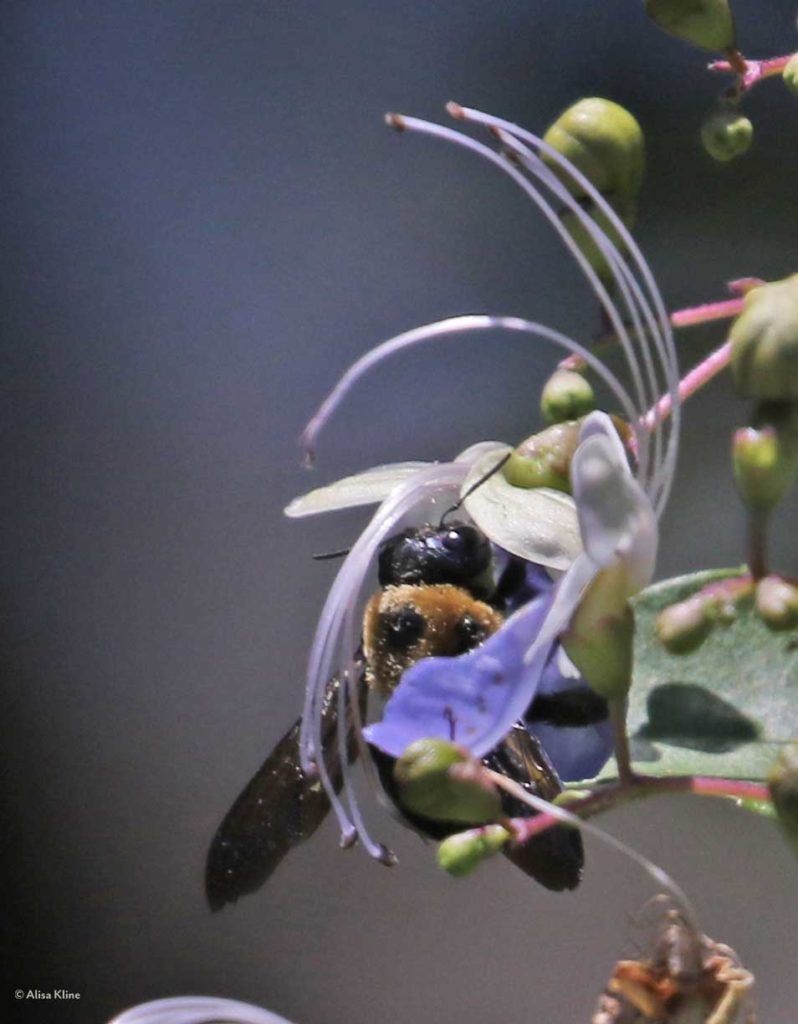 Fifty years ago, any suggestion that an animal was more than a stimulus-response machine would be met with accusations of anthropomorphism — ascribing to animals some attribute that could only belong to humans. Pavlov rang his bell each time he fed the dogs and eventually, the dogs so associated the bell with the food that they would salivate when the bell was rung, even in the absence of food. Stimulus: bell. Response: salivate.
Fifty years ago, any suggestion that an animal was more than a stimulus-response machine would be met with accusations of anthropomorphism — ascribing to animals some attribute that could only belong to humans. Pavlov rang his bell each time he fed the dogs and eventually, the dogs so associated the bell with the food that they would salivate when the bell was rung, even in the absence of food. Stimulus: bell. Response: salivate.
It’s not that operant conditioning (a fancy way of saying that you have learned to associate the bell with food) isn’t real. It’s just that all creatures other than humans were denied any other motivation for their actions. They were either born with the knowledge (a spider is born knowing how to make her web) or they were “learning” it through operant conditioning.
Animals were unfeeling machines that sometimes appeared to have feelings. Your dog is not happy to see you. Your dog has been conditioned through repetition that when you walk through the door something, something, something. The somethings didn’t matter. What mattered was that your dog was not happy. Happy was reserved for humans. For animals: stimulus and response.
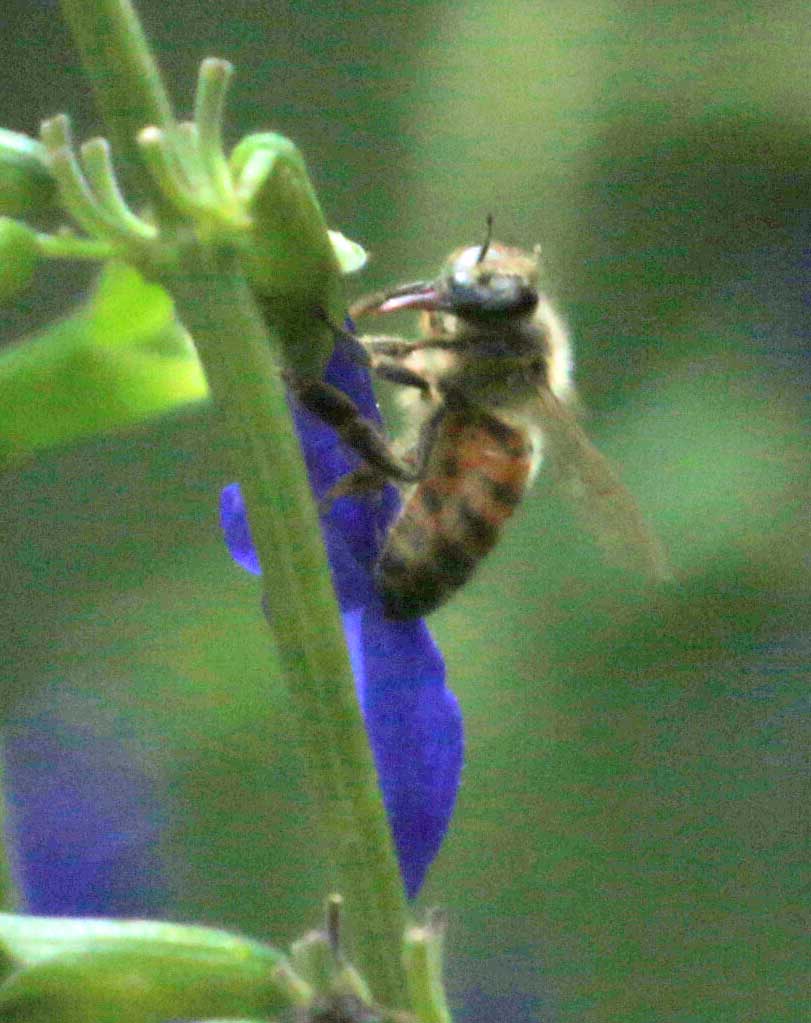
This isn’t a great photo, but you can see the honeybee’s tongue! She is about to stick it in a hole chewed by another bee, but that was last week’s blog topic.
This stimulus-response limitation fell apart under the weight of increasing understanding of how our own bodies processed thought and emotion. As we discovered the structures of our brain and nervous system, we also discovered that we are not the only species armed with the neurological systems required to feel happiness, fear, and more. It seems that much of the animal kingdom, even a bee, share many of them.
And then we began to unravel DNA and we found out that we are considerably less different from other life forms than we had imagined. It has been reported that we share 60% of our DNA with something as unfamiliar as a banana. It’s also not exactly that simple. But it is undeniably clear that we are related to most life on this planet. Probably all life on this planet.
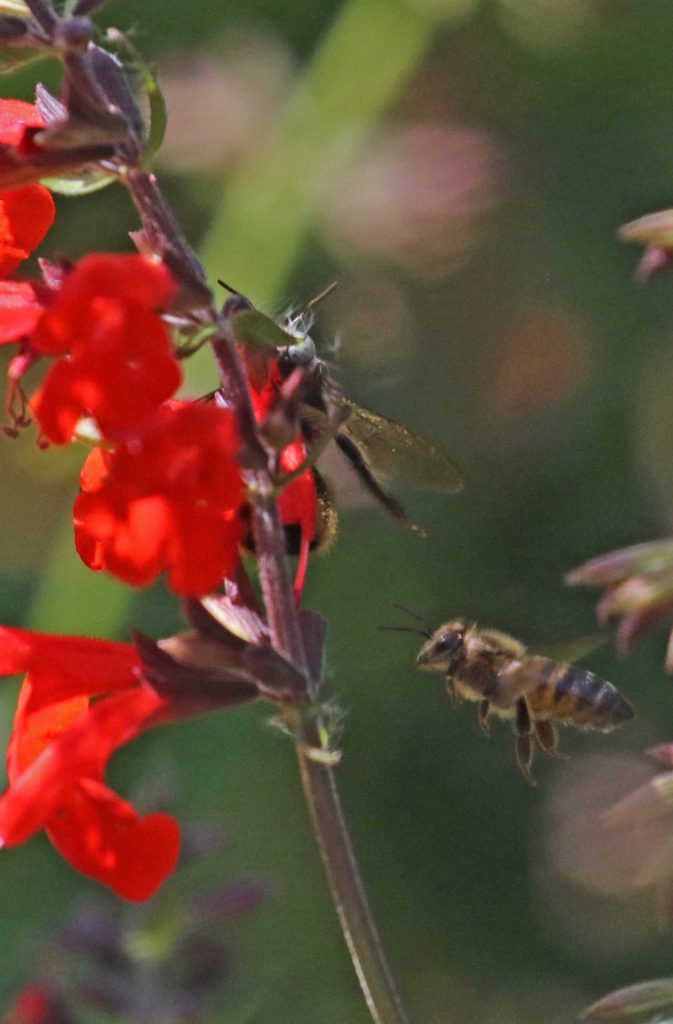
This is a honeybee about to land on a salvia. But notice above the honeybee, behind the flower, you can just make out the wings and green eyes of a parkinson’s carpenter bee.
So, in light of all this new understanding, I checked again about whether my dog is allowed to be happy. No. Now that we have learned to identify the potential for happiness within so many animals, the goalposts have been moved. Dogs are now allowed to experience pleasure. Which, apparently, is very different from happiness.
Science insists that we now reserve the word “happy” for higher-order pleasures. Friendship, the beauty of nature, that sort of thing. I wish I were kidding. These are the issues Aristotle wrestled with. We have learned a few things between now and then.
So, in the new understanding of the feeling of happiness, you can no longer be happy eating ice cream. You can only feel it as a pleasure. I didn’t come up with this and cannot explain it. And I’m taking it as an admission that animals can be what we often think of as happy.

This is so intuitive that you would think people who doubted animals could be happy would be the ones required to offer proof, not the other way around.
So, I am making the case for happy bees.
Humans make four neurotransmitter chemicals that are associated with human happiness, dopamine, oxytocin, serotonin, and endorphins.
I can find scientific journal articles referencing three of them in honeybees. The most interesting discusses how the queen bee produces pheromones that induce dopamine production in bees grooming her.
Put into simpler terms, the queen needs a bunch of friends to clean up after a party. She gives each one $100 an hour for help. The end result, the queen gets a cleaning and the cleaners are glad they got picked for the task because they pocketed $100 for very little work. Everyone is happy. Happy.
Inducing the production of dopamine in the groomer bees makes them happy to do that job.
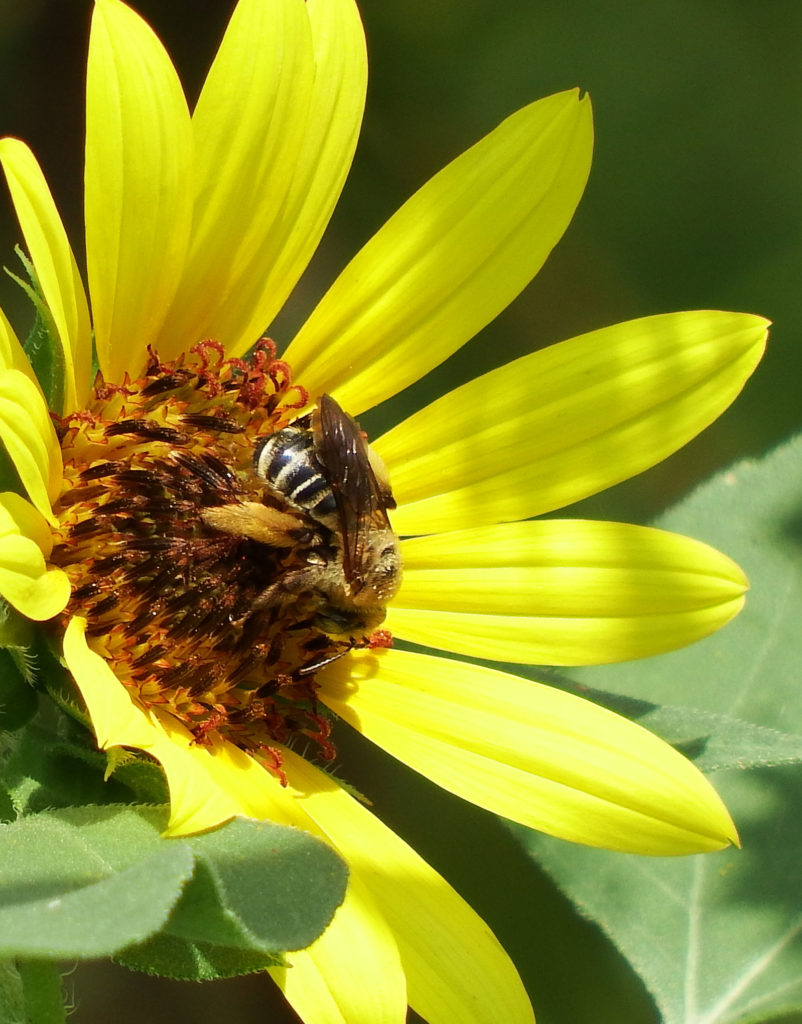
Happiness is how nature pushes us towards staying alive and reproducing. If eating doesn’t make you happy, you might forget to do it. If sex didn’t make you happy, you might not bother. We have made it this far in the evolutionary derby because the things that make us happy, for the most part, support our continued existence. That isn’t an accident. It’s natural selection.
Honeybees must be happy to find nectar. Otherwise, they wouldn’t bother. They are probably happy when they are cleaning the pollen that is clinging to them and pushing it into the pollen baskets on their hind legs. Otherwise, they probably wouldn’t do it.
Bees, and most other creatures, are probably happy fairly often. Happiness is nudge evolution that gives us towards survival. All the creatures who were nudged in bad directions by happiness aren’t here to tell us about it.
This should be obvious. Even though it isn’t. Fortunately, clever scientists devised a testing protocol that indirectly measures happiness.
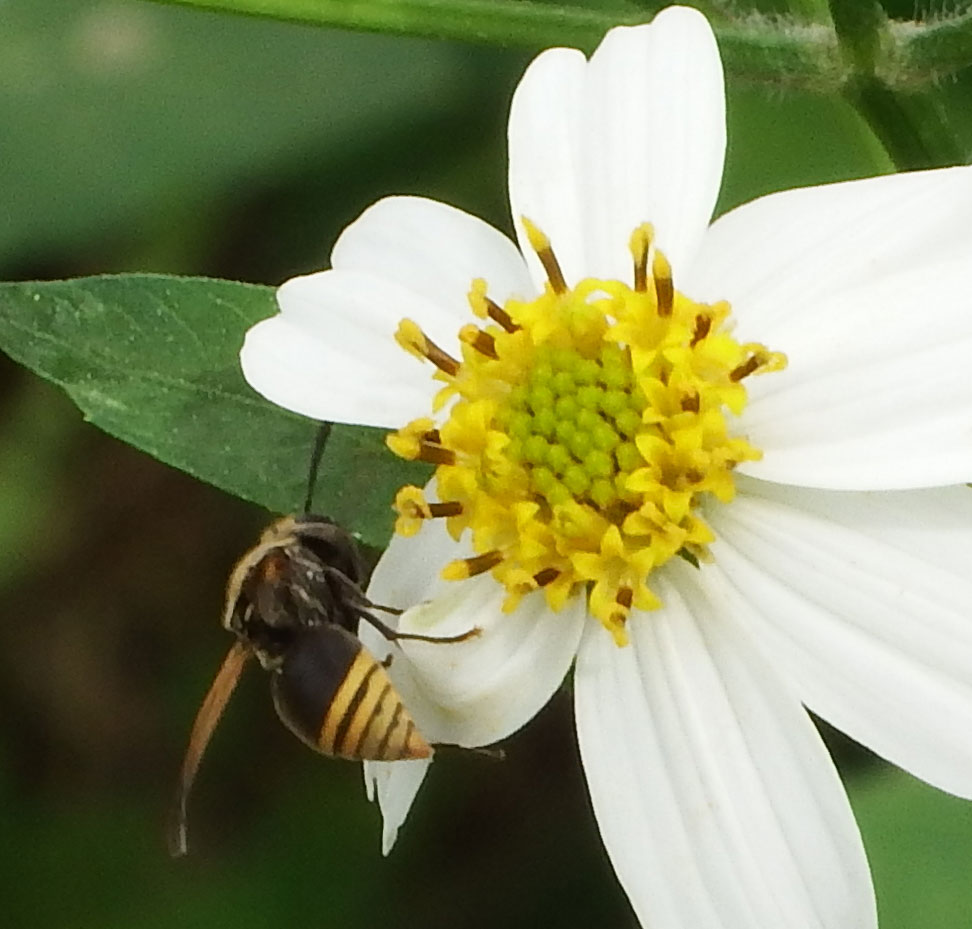
This isn’t a bee, it is a Mexican honey wasp. I bet she’s happy, too.
Honeybees were trained to associate a certain smell with a tasty meal and a different smell with an unpalatable meal. Essentially Pavlov. After they learned to associate the smell with the food, when presented with the “tasty” smell, the bees unfurled their tongues in anticipation of a meal. Presented with the “nasty” smell, the bees quickly retracted their tongues.
So far, still Pavlov. Then, they divided the bees into two groups. The first group was left alone, but the second group was shaken around for a few minutes.
The two groups were reunited and presented with a sequence of smells with various proportions of tasty and nasty. When tasty predominated, all the bees moved towards the smell and extended their tongues. The bees were similarly all averse to the blended smell when nasty outweighed tasty. But when presented with a 50/50 mix, the bees in the unagitated group were much more likely to move towards the smell and unfurl their tongues.
In other words, they gave it a shot. They were glass half full kind of bees.
The shaken group, however, had already been upset once today and no thank you, ma’am. They did not move towards the iffy smell preferring the safety of the half-empty glass. In other words, they had become pessimists.
This experiment has been conducted on many species and the results are the same. My favorites are the rats. Rats enjoy being tickled. So they divided the rats into tickled and untickled and presented with less than 50/50 stimulus and the tickled rats were completely down with glass half full. Untickled, not so much. Tickling puts them in a good mood.
We all know fear and we all know happiness. Even bees. And we all can be in a good mood or a foul mood.
Fortunately for bees not living in a laboratory, the world is usually more full of tasty things than awful things, so, as I began; there is a good case for happy bees!

Some of this science is on the new side, so I want to provide links to articles that informed this blog post. Also, the studies I have encountered are conducted on honeybees. Their life history is significantly different than our mostly solitary native bees. Since the biology of honeybees is closely related to that of native bees, you can decide whether any of this applies to them. I imagine that solitary bees along with your dog, cat, hamster, and housefly are all capable of feeling both happy and sad. Hopefully more happy than sad.
https://www.scientificamerican.com/article/do-bees-have-feelings/
https://www.sciencedirect.com/topics/biochemistry-genetics-and-molecular-biology/honeybee
https://www.ncbi.nlm.nih.gov/pmc/articles/PMC2265169/
https://phys.org/news/2018-01-chemicals-brain-honeybees.html

